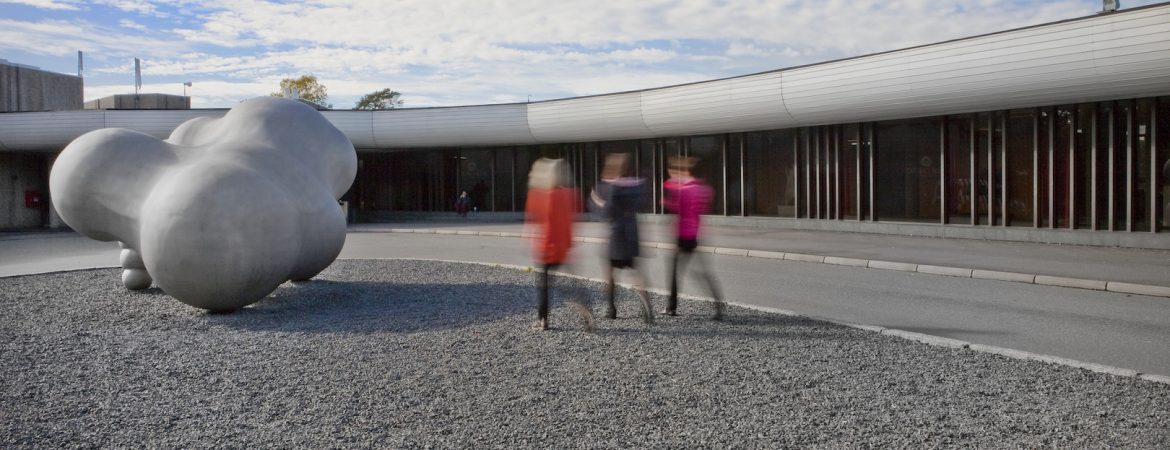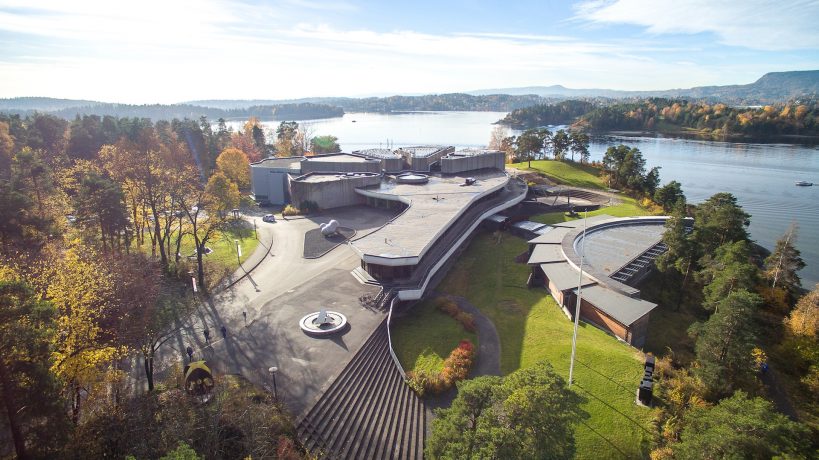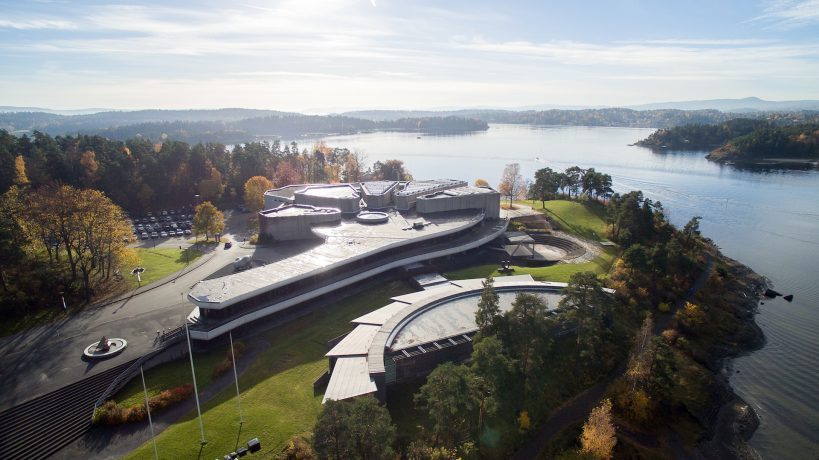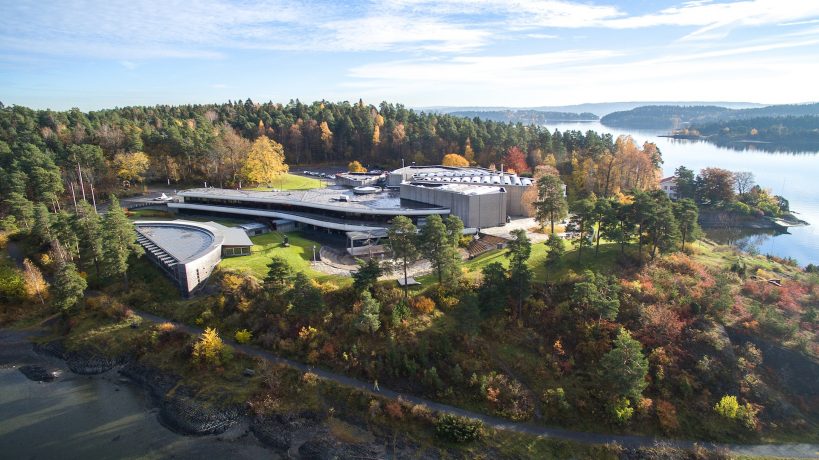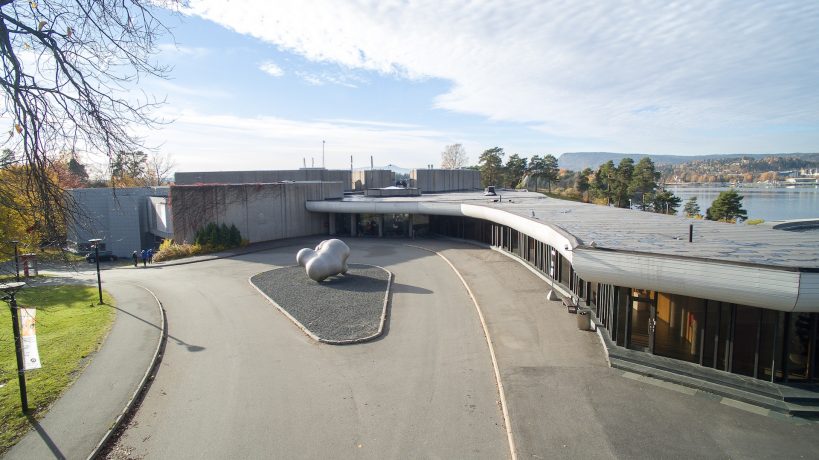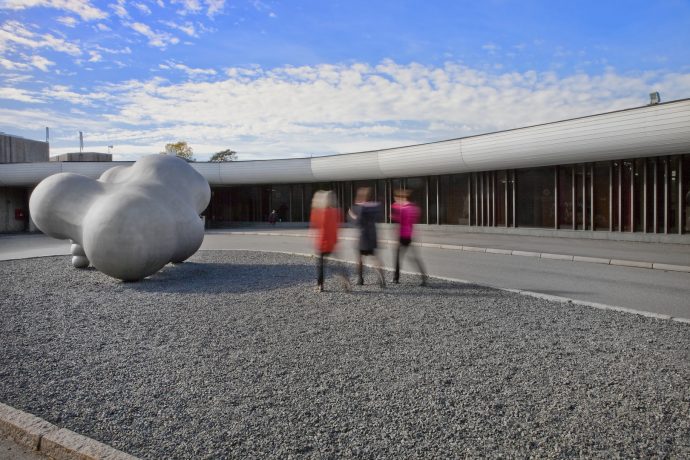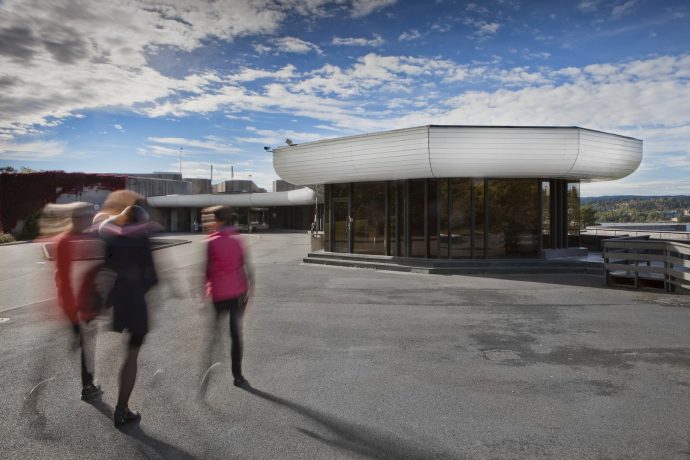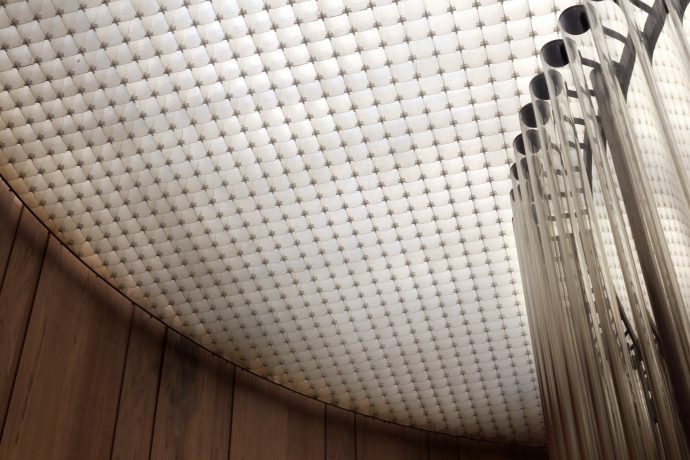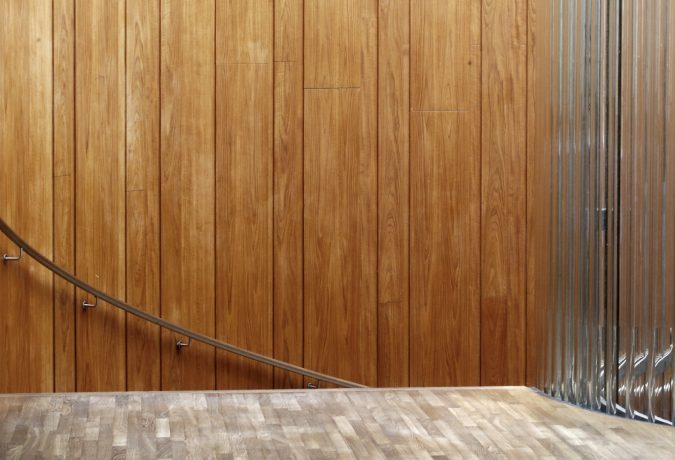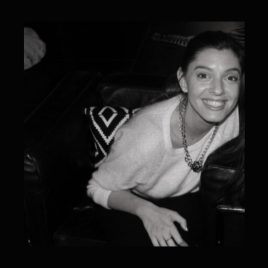Sonja Henie (1912-1969) was a successful figure skater turned businesswoman and Hollywood actress. Her career began at the young age of six when she picked up ice-skating. Little did she know this would eventually turn her into a great icon of Norway in the 1900’s. Winning several Norwegian Championships in 1924, Sonja started a pattern of winning all kinds of prizes including three Olympic gold medals. After all her success as an athlete, her family moved to Hollywood where she continued to shine, this time as an actress and producer of her own ice show, becoming one of the wealthiest women in America.
Being the glamorous little lady that she was, she met shipping magnate Niels Onstad (1909-1978) in 1955. Thankfully – for us- he was an art collector too, vastly influenced by his mother, who herself was a painter. The couple married a year later and dedicated their years together on developing their art collection, which eventually led to their building of the Onstad Kunstsenter. After her death at the age of 59 all of her awards, photographs, films and private documentation were donated to the HOK. Having accumulated almost 600 items, the HOK provided its own exhibition room.
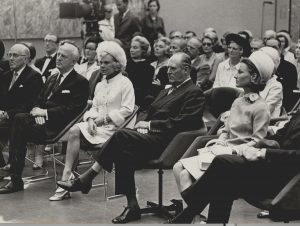
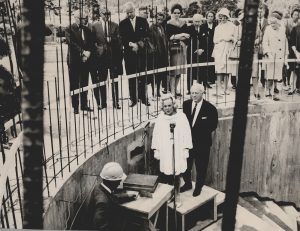
In 1959, they decided it was time to make the collection accessible to the public, sending it on an expansive exhibition tour for two years throughout many countries in Europe. As their collection only kept growing, the Sonja Henie and Niels Onstad trusts were formed in 1961 as two separate gifts, with its most important goal being the founding of a modern art museum; becoming the largest private art donation in the history of Norway.
The HOK placed organically within the landscape of Hovikodden has become one of Norway’s most iconic cultural buildings. It’s unique and sensitive architecture has given it it’s own distinctive character, using only Norwegian suppliers and materials, the selection rose a lot of attention. The combination of natural stone, concrete and copper with large glass panels created an architectural volume that just beautifully engaged the surrounding terrain.
An Architectural competition was held in 1962, the winners would be awarded the opportunity to design the art center for the famous couple. Two young architects, Jon Eivkar and Svein Erik, won the competition two years later and the iconic art center was built by 1968. It was the founders wish that the art center would become a hub for expression on both a national and international level. The public and the artists should find a place where creativity would be explored by interacting with each other.
"We tried to embody the idea of a forum where the relationship between art forms could unfold and be experienced", the architects said.
Unfolding across the countryside, many halls are linked to a main space, which is the main entrance and a central round transparent plastic elevator. This tube-like elevator has now become iconic. Creating a beautiful connection with the landscape surrounding the building, the exhibition spaces open up towards a fjord.
The materials selected and used for the project continue to make an appearance in the interior spaces of the Kunstsenter – natural concrete, copper and glass. Cautiously selected materials and textiles, such as carpet and teak gave the space a personal touch. A deep red textile, which can still be seen in the building, was hand selected by Sonja, who traveled around eager to find the perfect color and texture for her museum.
The Kunstsenter hosts not only the vast collection of visual arts but also performance arts, music and a restaurant. The same architects later extended the building by adding a two-story wing beside the waterfront, creating a major exhibition space of approximately 1.300 sqm (back then that was the largest exhibition space in Norway), which also housed workshops amongs other things.
Yet another extension was created in 2003, this time in form of a donation by a gallery owner named Haaken A. Christen. The architect, Stein Halvorsen, used mainly wood for his creation to contrast the Kunstsenter’s main building, which was predominantly designed with concrete and aluminum. The building as it currently stands is 9,500 sqm, consisting of 3,500 sqm exhibition space. However in 2013 HOK started a journey of a major renovation, which is hoped to be more energy sufficient and sustainable. Most importantly this renovation project is aimed to renovate and focus on the original qualities of the building. These works are planned to continue throughout 2017.
We here at Museeum truly cannot wait to visit this gem ourselves. Packed with so much art, history and dedication to its content and environment, we really believe that 'iconic' is only one of many great things you can call the Henie Onstad Kunstsenter.
